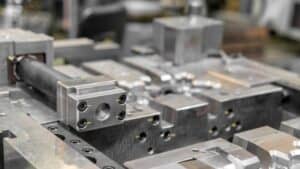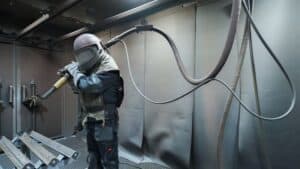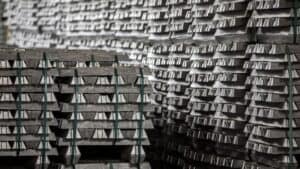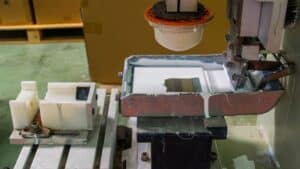Looking at a coupled injection molding machine for plastics, you can hardly guess the number of components. These are essential parts that work and complement each other to aid the plastic production process. In this article, we will have a look at the plastic injection mold components.
It is essential to know more about the different components of a plastic injection mold because they have different functions. Learning more about these parts can help you make better decisions while forming plastic products in the mold.
For instance, if you know the part of a plastic injection mold that determines how well an undercut is formed, you can observe that component during the process. This way, you have a much higher chance of getting good results.
The process of forming plastics through injection molding is quite complex. Think about it, so many things go into the mold, and you need to do a lot of tweaks to get the right results from injection molding. Therefore, knowing the names of components and how they function can make the whole process more understandable.
After this post, we are sure that you will know what components are responsible for different functions. And if there is any need, you know how to manipulate the machine and its parts to get the best results. So, let us proceed with our descriptions. Here is a list of the essential components you will find in an injection molding machine;
The support plate
Have you ever wondered what lies at the bottom of the mold? It is the support plate. As the name suggests, the support plate provides a stable surface for the mold. It is made of solid materials to withstand the heat from the mold during injection molding.
The support plate is also large enough to support many other components in the injection molding machine. You won’t need to bother about the support plate much when using the injection molding machine. The only thing you should do is ensure that it has been installed correctly in the machine. And then continue with your injection molding process.
Ejector box
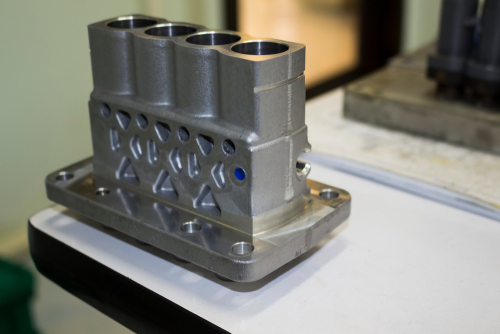
The ejector box is part of the molding machine that covers other essential components of the ejecting system. These components include the ejector pins, lifters, retaining plates, and blades.
It is an integral part of the injection molding process because it enhances the ejector pin’s capacity to push out the plastic product after it has been formed.
The ejector box consists of durable alloy that cannot rust easily. Usually, you won’t need to bother about maintenance because it lasts for many years.
Ejector retaining plate
This is the component responsible for holding the ejector pins steady when propelled upwards to push out the plastic product. Without the ejector retaining plates, the pins tend to wobble. And if that happens, the final plastic product will have some defects. In dire situations, the final product cannot be used by the end consumer.
Also, the retaining plate supports the pins when they return to their regular position. You can see how these parts function together. Without certain components, it will be impossible for the ejector pins to work correctly.
Ejector pins
The ejector pins have been designed to extend upwards and retract back to their normal positions. They work like pistons, only that in this case, the movements are not continuous. The ejector pins are made of tough alloys; they can hardly break. However, you should take good care of these components.
The primary function of the ejector pins is to push out a part from the mold after it has been formed. The pins are supported by the retaining and supporting plates. After pouring the molten plastic into the mold, it creates a part. This happens when the injection mold has cooled down. Then the ejector pins push the plastic out of the mold. It retracts to enable the mold to close correctly for the next batch.
The spruce bushing
Through the spruce bushing, the mold is filled with molten plastic. This is another essential part of the injection molding machine. It is best described as the channel through which the molten plastic is put into the mold. Next, the product forms, and it cools down, ready to be expelled with an ejector pin.
The leader pins
These are the strategically positioned pins in the injection mold. The primary function of this part is to ensure that the two equal half parts of the injection mold are secure over each other without any trace of overlapping. Therefore, we can say that the leader pins act as a user guide only. Always ensure that these pins are visible while you form plastics. And you are good to go.
The function of the locating ring is to ensure that the mold is center-aligned in the injection molding machine. It is another essential part of the machine because a wrongly placed mold will compromise the drying process. Also, it creates an opportunity for spills which can be dangerous considering the high temperature.
Generally, you can clean all these components of the injection molding machine. Cleaning is essential after a session of using the machine. Inside, you will find traces of molten plastic and other types of dirt. Thankfully, the cleaning process is not too complex.
First, you will need to get an anticorrosive spray product. These products are available on shelves in your regular store. Spray the parts of the machine made of metal and other alloys. Also, you should clean off stains with a damp cloth. We do not think it is a good idea to try removing any part of the machine yourself. Well, except you have been trained. Try to clean the machine as a whole.
In addition, always ensure that the storage environment is not too humid. You can use a dehumidifier to monitor humidity levels in your storage space.
As always, if you need to ask questions about our molds, please feel free to send us a message anytime. We will send you all the details within a short time.

